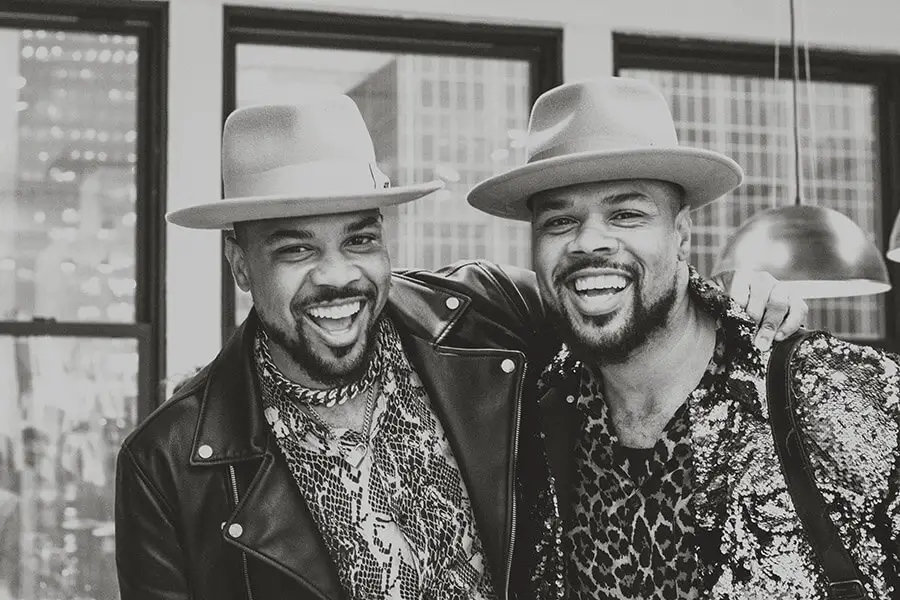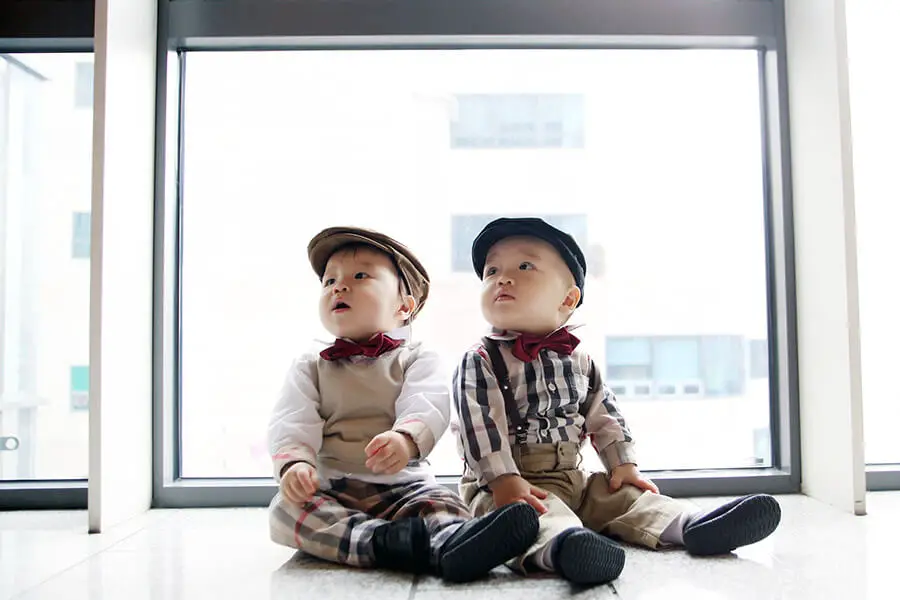Affiliate Disclosure – This post may contain affiliate links where we may receive compensation if you purchase products linked below. As an Amazon Associate, I can earn from qualifying purchases. This doesn’t cost you anything and helps keep our little blog running. Read our privacy policy for further information.
As a dad to twin boys, I remember watching them when they were little babies and wondering to myself ‘I wonder at what age the boys will begin to properly recognise each other?‘. At the time of writing, they’re both 14 months old now and are glued to the hip but that wasn’t always the case in those early days.
This led me down the path of being interested in when other twin parents found their twins to begin noticing each other and interacting. My findings were interesting which was what prompted me to create this post.
When Do Twins Acknowledge Each Other?
Twins don’t wake up one day and suddenly work out that there is someone who shares similar looks (or the same in the case of identical twins). Instead it’s more of a staged approach of learning to recognise and getting to know each other.
Plus we also think that twins don’t necessarily ‘notice’ each other because for them it’s normal. They don’t know that being a twin is special and instead have grown up thinking it’s normal to have a sibling (that possibly looks identical to you) by your side since day 1. For us, we find it one of the most special things but for twins, they don’t know any better and it’s just normal.
We’ve created a timeline of how our boys acknowledge and begun to show each other affection below. It’s important to note that every pair of twins is different. Whether that be due to being born premature or late bloomers, your experience with your twins may be earlier or later than ours so please just use this as a rough indication!
First Stage – In the Womb
One of the amazing things about twins is the bond that is shared between the two. It’s thought that this bond starts in the womb as early as 13 weeks where they begin to notice they are sharing the womb with another baby. Studies have been undertaken using 3D ultrasounds which captured twins stroking one another’s heads and backs while in the womb. How amazing is that?!
Second Stage – Smiling and Looking at Each Other (3+ months)
In the early days while our boys practiced tummy time or drunk their bottle of milk, they’d occasionally glance at each other and smile until the other one begun to smile. It was super cute and some of the first times we saw them notice each other.
Third Stage – Affection (6+ months)
At around the 6 month mark we saw the boys relationship really blossom. Sometimes in those early days when the boys would look and smile at each other it’s easy to wonder if it was maybe just a coincidence but once they near the 6 month mark, you realise the acknowledgement is real.
Some of the different engagement between our twin boys we saw at the 6 month mark and onwards included:
- Affection – The boys would crawl (or later walk) up to each other and give one another a big hug or kisses. Super cute and enough to make any parent melt!
- Calling and Talking – Whether it be laying in bed (the boys sleep in different beds in the same room) or finding objects around the house, the boys begun talking in their unique jibber to each other.
- Watching and Learning – As the boys became more mobile from crawling to walking, we begun to see them try new things whether it be climbing an object or simply watching the other one eat. With this came each other closely watching and learning as the other one would complete something that they hadn’t yet quite grasped.
The development we saw in the boys showing affection and beginning to interact with one another at the 6 month mark also coincides with research undertaken into the behaviour of twins. This study found that most twins begin to begin to show social interest in one another while interestingly also get upset if separated from each other.
Fourth Stage – Developing a True Bond (One Year and Onwards)
 After your twins begin to acknowledge each other by showing signs of affection, sharing things with each other and learning from one another, they’ll also begin to learn that they share the special bond that is being twins.
After your twins begin to acknowledge each other by showing signs of affection, sharing things with each other and learning from one another, they’ll also begin to learn that they share the special bond that is being twins.
As your twins grow older and learn to properly talk, they’ll begin to learn that they are different (in a good way!) to normal sibling relationships. It’s at this stage if you have identical twins they begin to ask questions to why they might look the same compared to other children. Or why there is two of them compared to their friends where there is just one of them.
Summary and Closing
We hope this post has given you a rough idea of when twins begin to develop and engage with one another. It’s important to note that all twins are different with some developing at different times to others. You may find that yours begin to engage with one another much faster than our boys did.
Affiliate Disclosure – This post may contain affiliate links where we may receive compensation if you purchase products linked below. As an Amazon Associate, I can earn from qualifying purchases. This doesn’t cost you anything and helps keep our little blog running. Read our privacy policy for further information.

My name’s Alex and I’m a husband, dad to beautiful identical twin boys, cyclist, photographer and connoisseur of great coffee!
Help I’m Having Twins has been created for me to share what I found useful as a new parent and dad to twins.


